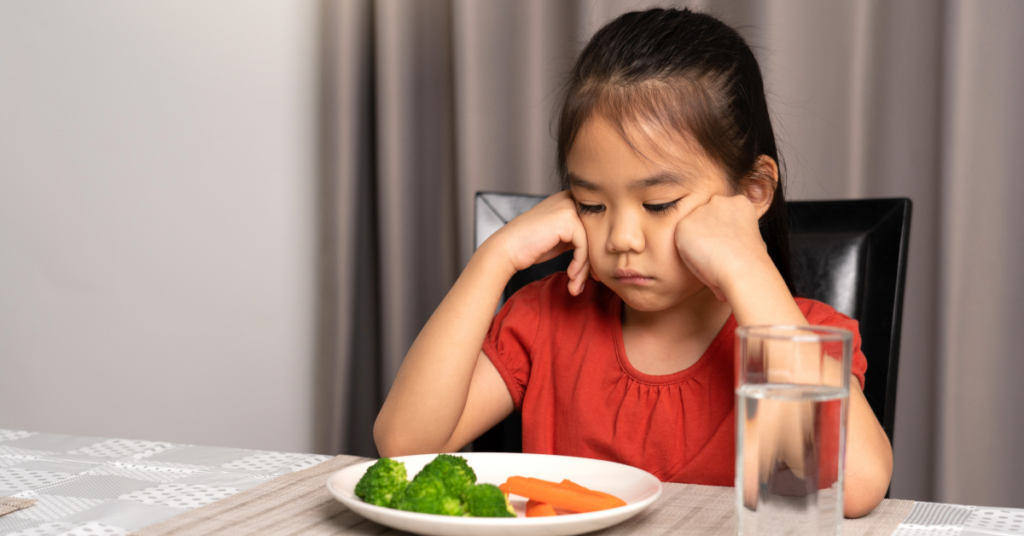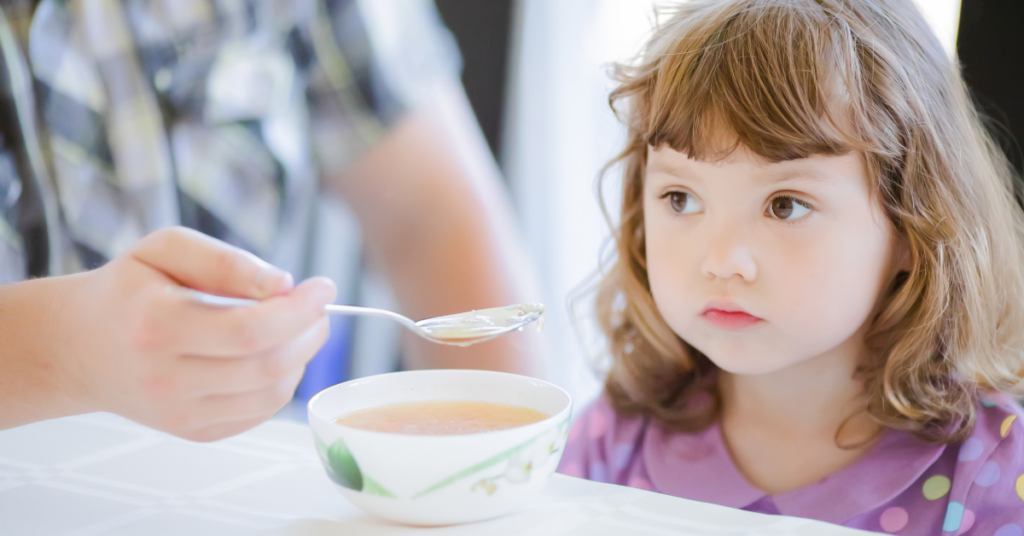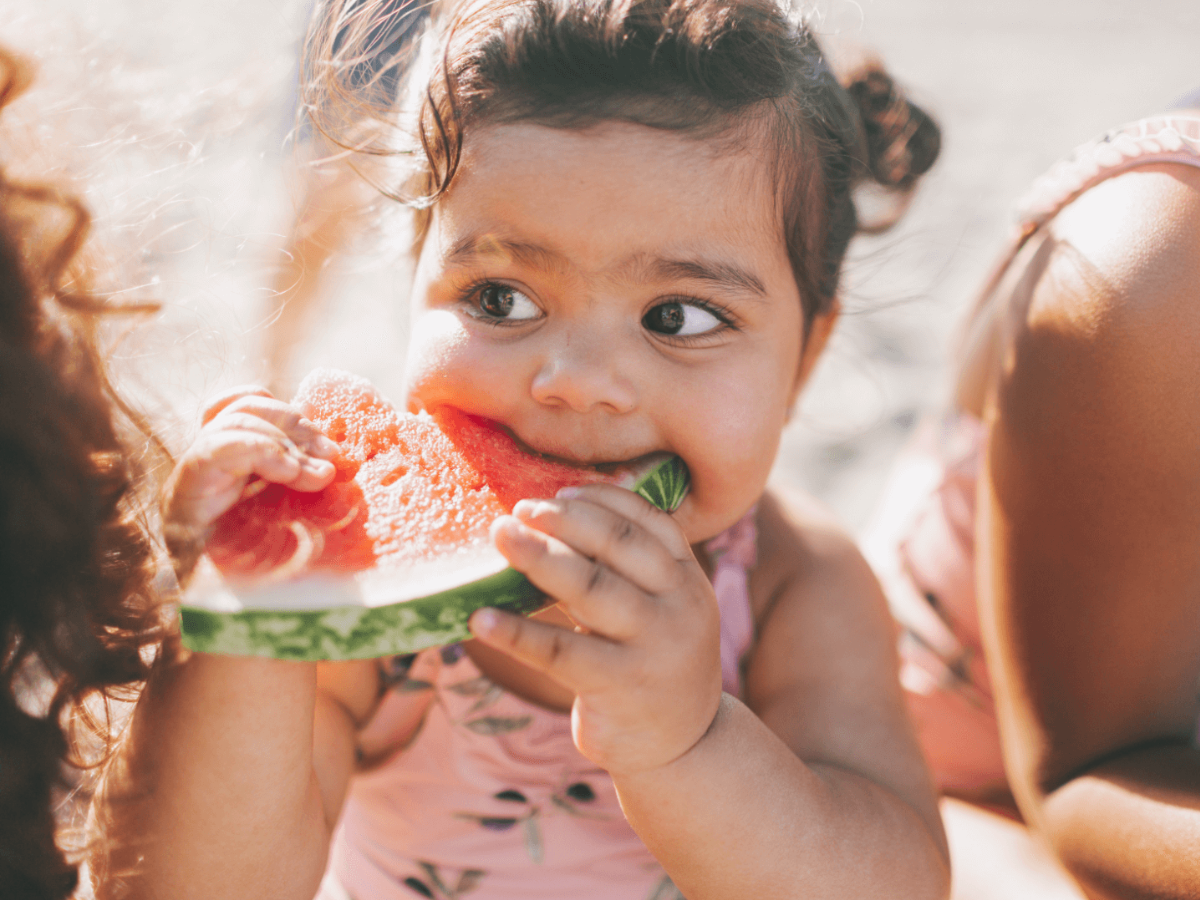Moms are linking arms and deciding to squash snack shaming once and for all after a 3-year-old was shamed for bringing a cup of Pringles to his son’s school. Yes, you read it correctly. Kid snack shaming is a real thing.
Megan Peavey on TikTok recently sent her little boy to school with a snack-sized Pringles cup, only to have the words “Please help us make healthy choices at school” written in Sharpie on the package he brought home.
“They snack-shamed my 3-year-old, they snack-shamed me, by writing that passive-aggressively on his trash,” Megan responded.
As a mom of a toddler myself, this whole situation hit home. Of course, we try to provide healthy snacks like whole grains, granola bars, and low-fat dairy products. But when you’re juggling raising a kid, extreme picky eating, considering very age-appropriate snacks, holding down a career as a working mom, laundry, cleaning, planning family activities, and your own personal time, sometimes throwing in a Pringles snack cup into a lunch box is the mental break we need.
When it comes to what we, and the adults in our kids’ lives, say in regard to food, we need to pay attention. Kids are like little sponges—soaking in everything and learning every single day. What’s said to them can easily affect their mental health and play a big role in how they develop. That’s why we want to dive into the effect snack shaming can have on children and tips to promote a more positive and inclusive attitude towards food.
Snack shaming can contribute to eating disorders and an unhealthy relationship with food. Today’s parents, school officials, and preschool directors need to understand that labeling foods as “bad food” or “junk foods” can have the opposite effect, leading children to view certain foods as forbidden and more desirable. Instead, promoting a variety of foods, including healthy snacks, in a positive manner is the best way to encourage healthy eating habits.
Megan’s follow-up videos on social media, including TikTok users’ comments and fellow parents’ support, highlight the need for schools to reconsider how they address food choices. Rather than a passive-aggressive note on an empty Pringles container, a phone call or a conversation with parents could be more effective. Additionally, schools should focus on teaching children about balanced eating without stigmatizing certain foods.
The Negative Impact of Snack-Shaming Children

Kid Snack shaming–or food shaming–can have a big impact on a child’s healthy relationship with food. Once we start labeling food as good or bad, we need to take a step back. We love how Michele Fumagalli, RD, a registered dietitian, puts it. “Food is food and has absolutely zero mortality.” And she’s 100 percent right.
The U.S. Department of Agriculture and registered dietitians emphasize that a child’s appetite and body size vary, and children need to learn to listen to their own choices. Addressing childhood nutrition in a holistic manner, considering both physical and emotional needs, is crucial. Mental health counseling and support from family groups can also help children develop a healthy relationship with food.
Michele also explains on her nutrition blog that “When we label something good or bad, feelings of guilt or praise arise, including food. Why should we feel these feelings every time we put food into our mouth and more importantly what toll does this take on our relationship with food, self, and our body?”
According to another fantastic registered dietitian and clinical nutritionist, Alana Kessler, MS, RDN, notes that labeling food as good or bad can lead to:
- Eating disorders in children
- Bad eating mindset
- Food anxiety
28.8 million Americans will have an eating disorder in their lifetime. And on top of that? Eating disorders are linked to the highest risk of death from any mental illness. Knowing what food shaming is can be the first step to flipping the script.
Examples of Kid Food Shaming

In my experience as a mother, I have heard it all. My daughter is 1.5-years-old and I’ve already heard a handful of negative comments on her eating habits. “She needs more meat, she’s too skinny.” Or, “You’re really going to let her eat ice cream?” and even when I thought I was doing something right “She’s eating too many vegetables, where’s the good stuff?”
Other kid food shaming examples include:
- “Wow, you’re still hungry?”
- “That’s a lot of food on your plate!”
- “Don’t order a salad. You need more meat on your bones.”
- “Do you think you should choose something healthier?”
- “Those cookies are going to go right to your tummy.”
- “I wish I could eat that much and be that skinny!”
Food shaming is either calling attention to what someone is eating or how much they are eating. And yes, it’s also still considered food shaming even if that person isn’t old enough to understand words yet.
Promoting an Inclusive Attitude Toward Food

For those looking to change their ways or start off on the right foot with their little ones when it comes to nutrition, here are two powerful tips from registered dietitians to promote a healthy outlook on food.
Flipping the script
Michele recommends rewording how we talk about food. “Good & bad” can be switched to “very nourishing & not-as-nourishing.” This takes the morality of food out of the picture. “Once we are aware of which not-as-nourishing foods, aka the food that make us really happy, but not our body, the key to balancing the amount we have of these foods comes down to self-respect, care and trust,” she notes. All food is nourishing–some just more than others.
Don’t be overly restrictive
Alana suggests avoiding being too restrictive towards food. The more you make a diet limited, the more likely you or your kids will develop a strained relationship with food. It’s okay to “treat” your family to ice cream and cake if it’s done in a positive setting. The key is balance and a good mindset.
As moms, of course, we always strive for healthy choices when it comes to nourishing our kid’s bodies. But sometimes choosing to throw some chips into your child’s lunchbox for a school lunch over cutting up bite-sized fruits and vegetables is our small break for the day. And while even though some snack shaming is aimed at today’s parents, the kids are the ones being hurt the most.
Rewording how we talk about and act around food with our kids can make a huge difference in their healthy development. Start small with simple steps. Take “good & bad” and replace it with “very nourishing and not-as-nourishing.” Also, try to avoid being overly restrictive towards food groups.
Adult Accountability
Lastly–and maybe most importantly–hold the other adults in your life accountable for what they say in regard to your kid’s eating habits. Teach others so we can help our children.
Conclusion
As we move into the next school year, let’s take responsibility for promoting a healthy environment without kid snack shaming. This includes considering all types of snacks, whether it’s a cup of Pringles, a granola bar, or peanut butter with whole grains, and recognizing that each has its place in a balanced diet. Let’s support our little friends in making healthy choices and enjoying their school day without the added stress of food shaming.




